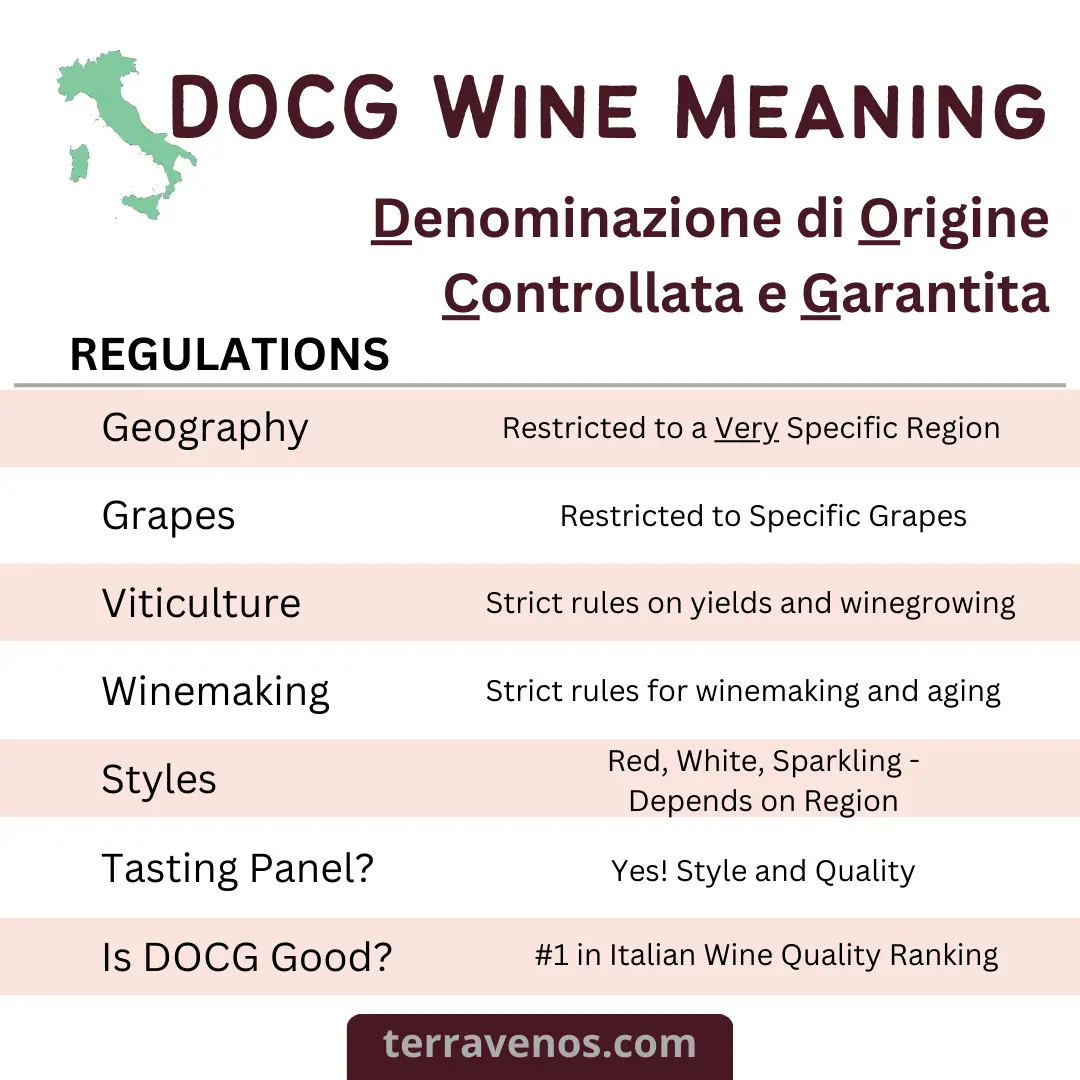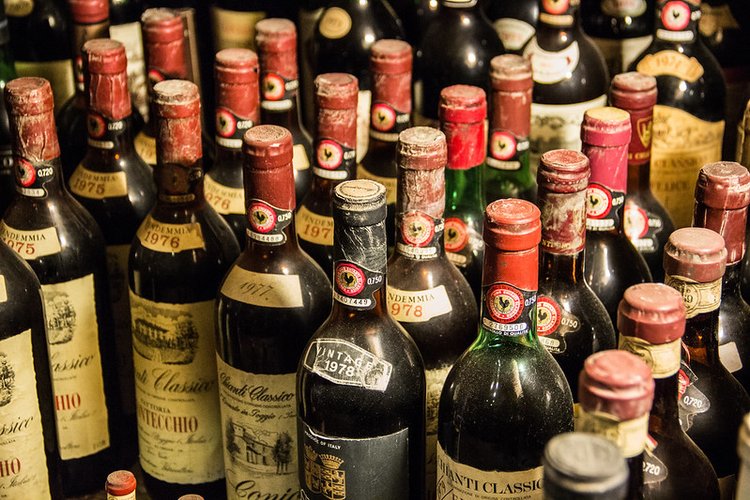
DOCG wine is Italy’s top classification. DOCG wines follow strict regulations for growing and making. DOCG wine goes through a tasting panel.
What’s DOCG Wine?
Denominazione di origine controllata e garantita (DOCG) translates to “controlled and guaranteed designation of origin”.
- Controlled: Refers to the fact that the grape growing (viticulture practices) and winemaking practices follow strict regulations tied to a specific geographical region within Italy (e.g., Chianti).
- Guaranteed: Means that the Italian wine went through a tasting panel certifying the wine’s quality.
Rigorous Quality Control for DOCG Wines
DOCG wines undergo a thorough evaluation by a government-licensed panel before receiving a numbered seal on the cap or cork. This strict process ensures that a bottle with the DOCG designation is a guarantee of exceptional quality.
Are DOCG Wines Good?
Yes, DOCG wines are good. Because DOCG wines go through a tasting panel, they’re guaranteed (the “G” in DOCG) to meet the quality controls for wines made under the DOCG regulations – style, alcohol content, aging requirements, viticultural practices, etc.
Origins and Evolution of DOCG Wine
The creation of DOCG stemmed from concerns that the lower DOC wine designation was too liberally applied. In 1980, three original DOCGs—Brunello di Montalcino, Vino Nobile di Montepulciano, and Barolo—were approved. These wines, known for their unique traits and strict production standards, represent the zenith of Italian winemaking.
Check it Out: Barolo vs Brunello, Big Italian Red Wines
How Many DOCG Wines Are in Italy?
Today, there are 77 DOCG wine regions in Italy. They span everything from Chianti DOCG to Prosecco DOCG, and cover different regions, grapes, and winemaking styles.
Navigating Multilingual Territories
In regions like Bolzano, where German is an official language, and the Aosta Valley, where French is spoken, the term DOCG may take different linguistic forms (Kontrollierte und garantierte Ursprungsbezeichnung and Dénomination d’origine contrôlée et garantie, respectively). This multilingual touch reflects the rich diversity of Italy’s wine culture.
Origin of Italian Wine Regulations

In 1963, Italy, post-Treaty of Rome, introduced a system inspired by French AOC laws to regulate agricultural products. By 1992, adapting to EU laws, Italy revamped the system, introducing the broader denominazione di origine protetta (DOP) designation. This change had a profound impact on Italian wine regulation, aligning it with evolving EU standards and setting the stage for further advancements in the recognition and protection of Italian wines within the EU.
Thirsty for More?
Check out the differences between DOC and DOCG Italian wines here.



